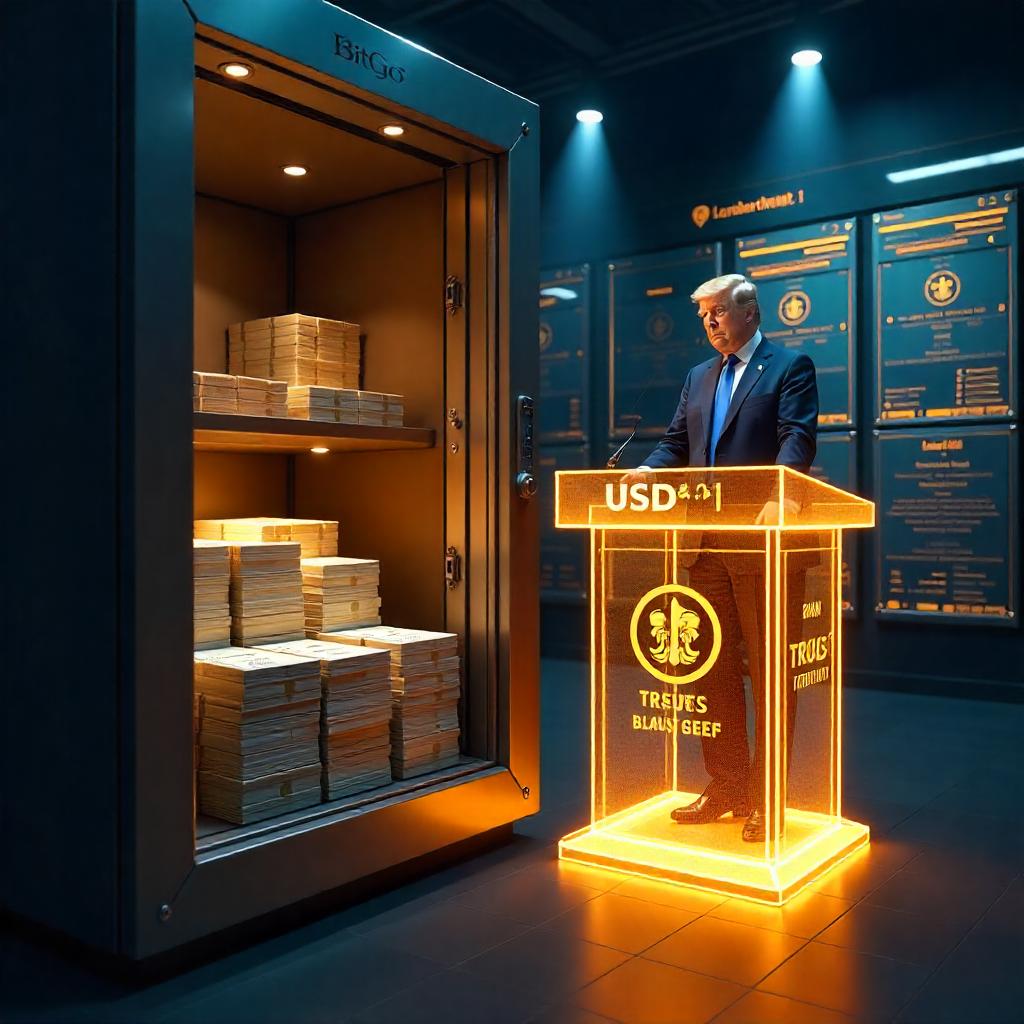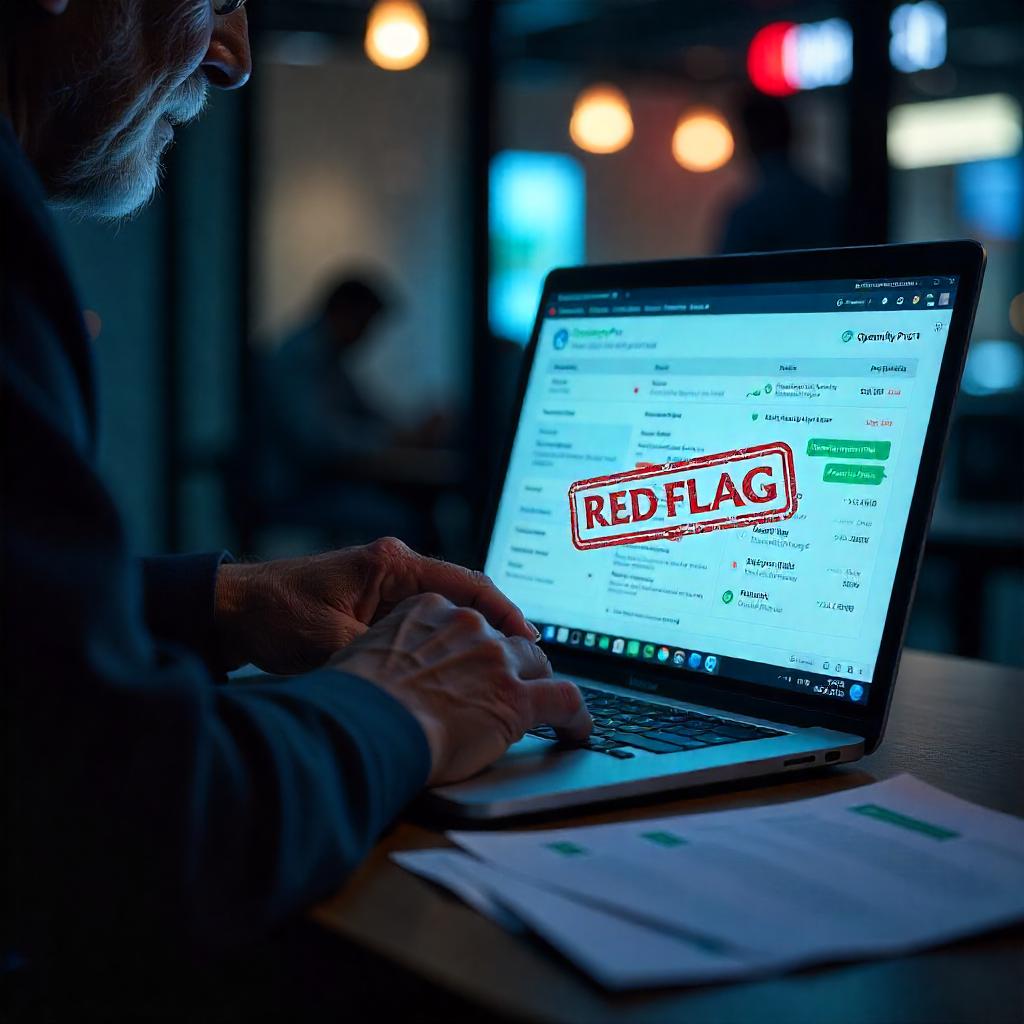A High-Stakes Transparency Test
The release of World Liberty Financial’s USD1 stablecoin reserve audit isn’t just routine paperwork—it’s a litmus test for trust in politically charged digital assets. Launched in March 2025 with backing from former U.S. President Donald Trump, USD1 rocketed to a $2.2 billion market cap in under four months. Its ascent, fueled by airdrops and institutional deals, now faces scrutiny. Can a stablecoin entangled in Washington’s power dynamics deliver institutional-grade transparency?
For stablecoin users, the stakes are visceral. Trust hinges on one number: $2.2 billion. That’s the exact sum WLF claims backs every USD1 token in circulation. Yet shadows loom. Trump’s family business holds 40% of WLF, pocketing ~$190 million from token sales. This collision of financial ambition and political influence amplifies skepticism.
The audit arrives amid a regulatory powder keg. Proposed U.S. legislation demands monthly attestations—a standard WLF vows to adopt. But promises aren’t proof. After TerraUSD’s collapse vaporized $40B, users demand ironclad verification. USD1’s audit must answer three critical questions: Reserve Integrity: Are assets truly 1:1? Asset Quality: Is backing purely liquid Treasuries—or riskier instruments? Redemption Reliability: Can users exit swiftly during market stress?
WLF’s transparency offensive signals ambition beyond partisan branding. But for users navigating stablecoin risks, this audit isn’t just data—it’s the foundation of faith.
Audit Breakdown: Methodology, Assets & Verification Gaps
The Core Findings
| Metric | Detail | User Implication |
| Total Reserves | $2.2B – matches circulating supply exactly | No supply overhang; each token redeemable |
| Asset Mix | 85% U.S. Treasuries (≤3-month maturity), 12% cash deposits, 3% cash equivalents | Low credit risk; high liquidity |
| Custodian | BitGo (SOC 2 Type II certified, NYDFS-regulated) | Institutional-grade security |
Investigational Insights
The numbers are in—$2.2 billion in verified reserves back every USD1 token 1:1. WLF’s inaugural audit confirms full collateralization. But the how and what demand scrutiny. WLF cites an independent accounting firm conducted the audit but withheld its name. This contrasts starkly with USDC’s monthly Grant Thornton attestations. Without knowing the auditor’s reputation or methodology, users must extend blind trust.
Holding primarily short-term Treasuries is a structural advantage—far safer than USDT’s historically opaque commercial paper reserves. Yet WLF omitted Treasury maturity dates. If rates spike or markets freeze, longer-dated bonds could lose liquidity during mass redemptions. WLF announced plans for Chainlink-powered real-time verification by Q4 2025. Today’s audit remains a point-in-time snapshot. Until live on-chain proofs deploy, users rely on periodic reports vulnerable to window dressing.
The 3% ($66M) allocated to cash equivalents lacks specificity. Are these money market funds? Repurchase agreements? Commercial paper? Opaque categorization invites risk, echoing pre-collapse Terra reserves that included its own governance token.
Full backing is verified, but WLF’s audit lacks the granularity of leaders like USDC. Demand public methodology details and maturity schedules before trusting this $2.2B claim unconditionally.
The Transparency Pledge: Audit vs. Industry Standards
World Liberty Financial promises unprecedented accountability with its USD1 stablecoin. But how does its transparency framework actually compare to market leaders? Let’s dissect the pledges against operational realities.
Monthly Attestations: A Step Forward
WLF commits to monthly reserve attestations, directly addressing a core failure of TerraUSD’s infrequent audits. This aligns with emerging U.S. regulatory proposals. Yet a pledge isn’t proof. USDC has delivered 38 consecutive monthly attestations—WLF has one. Users should verify reports publish on schedule.
The Multi-Chain Transparency Challenge
USD1 circulates across three chains, creating auditing complexities. | Blockchain | USD1 Circulation | Trading Volume Share |
| BNB Chain | $2.15B | 97.8% |
| Ethereum | $45M | 2.18% |
| TRON | $5M | 0.02% | While reserves back tokens uniformly, cross-chain reconciliation remains manual. Auditors must verify no double-counting exists—a risk during high volatility. Chainlink’s planned integration aims to automate this by 2026.
Redemption Mechanism: The Unaudited Risk
Users can mint/redeem USD1 via BitGo with 1-2 business day settlement. But the audit didn’t test capacity, stress scenarios, or future fee structures. Contrast this with USDC’s documented 24-hour redemptions and USDT’s $10B/day processing capacity.
WLF’s real-time verification relies on a future Chainlink integration. Until live, users see reserves only through delayed reports. Leading auditors emphasize snapshot audits are vulnerable to manipulation between reporting dates.
Test redemption speed with a small USD1 conversion. Time how long fiat hits your bank. This real-world check matters more than marketing claims.
Political Ties & Controversies: Conflicts or Credibility?
USD1’s $2.2B reserves are verified—but its political entanglements remain unaudited. With Donald Trump’s family business holding 40% of WLF equity, the stablecoin operates at the intersection of finance and Washington power dynamics.
The Ownership Structure
Trump Organization holds 40% of WLF via a Delaware-registered entity, earning ~$190M from USD1 token sales to date. WLF profits from USD1 minting/redemption fees and treasury yield spreads. Trump’s former economic advisor chairs WLF’s advisory board.
Regulatory Crossfire
Proposed legislation explicitly targets stablecoins controlled by political figures. It mandates weekly audits and Treasury Department oversight for such projects. Critics argue USD1 creates unprecedented conflicts of interest. The Trump administration is advancing legislation easing capital requirements for stablecoin issuers. Critics allege WLF would directly benefit.
User Risk Assessment: Beyond the Audit
Trump’s base fuels demand—USD1 pairs with themed memecoins drive $1.25B daily volume on PancakeSwap. But regulatory retaliation could freeze bank accounts or disable minting redemptions. The UAE’s $2B Binance transfer using USD1 signals institutional trust. But if U.S. sanctions target UAE entities, USD1 reserves could be frozen mid-transit. 67% of USD1 liquidity comes from Trump-aligned projects. A single tweet could evaporate demand.
Political branding turbocharged USD1’s growth but anchors it to regulatory and reputation risks no audit can quantify. Diversify holdings to mitigate single-stablecoin exposure.
User Growth Strategy: App Launch & WLFI Token Expansion
WLF isn’t just auditing reserves—it’s aggressively expanding USD1’s reach. A forthcoming retail app and tokenomics overhaul aim to attract mainstream users. But do these moves strengthen stability or introduce new risks?
The LibertyPay Retail App: Bridging Web2 and DeFi
Slated for Q3 2025 launch, LibertyPay targets non-crypto natives with fiat on-ramps, staking, and simplified transfers. It aims to capture PayPal/Venmo users seeking yield. But current USD1 redemptions take 1–2 days—no live stress-test exists for mass withdrawals.
WLFI Governance Token: From Locked to Liquid
| Phase | 2024 Status | 2025 Plan |
| Tradability | Non-transferable | CEX listings (Q4 target) |
| Utility | Voting only | Liquidity mining incentives |
| Supply | 100M (100% team-held) | 30% airdropped to users | User Risks: Airdrops could flood supply, crashing WLFI’s value. Team controls 70% of tokens—centralizing governance. Liquidity mining may force WLF to sell treasuries to fund WLFI rewards.
Airdrop Impact: Growth vs. Reserve Health
June’s $4M USD1 airdrop to 85,000 wallets boosted adoption but temporarily diluted reserves by 0.18%. It attracted mercenary users: 92% of recipients sold USD1 within 72 hours.
Growth tactics must align with stablecoin integrity. If WLFI becomes a speculative asset, it could destabilize USD1’s core promise.
Competitive Landscape: Can USD1 Challenge USDT/USDC?
USD1’s $2.2B reserves are verified—but can it truly compete with $113B USDT and $28B USDC? The audit reveals both strategic advantages and critical vulnerabilities.
Reserve Quality Comparison
| Stablecoin | Backing Assets | Audit Frequency | Real-Time Proof |
| USD1 | 85% U.S. Treasuries (≤3mo), 15% cash/cash eq. | Monthly (planned) | Planned (2025) |
| USDC | Cash + U.S. Treasuries (SEC 2a-7 compliant) | Monthly | Live (Chainlink) |
| USDT | 85% Treasuries, 15% other (inc. Bitcoin collateral) | Quarterly | Partial (Mercuryo) | USD1’s Treasury-heavy reserves beat USDT’s opacity but trail USDC’s SEC-regulated structure.
Market Position: Volume vs. Trust
USD1 averages $1.25B daily—third behind USDT/USDC but ahead of DAI. 57/64 USD1 trading pairs involve themed memecoins. USDT/USDC have diversified pairs. UAE sovereign fund MGX moved $2B via USD1 for Binance investments—a credibility milestone.
Critical Weaknesses
USD1 only lives on BNB Chain (97.8%), Ethereum, TRON. No Solana/Polygon support cuts off 34% of DeFi users. USD1’s 5% APY staking relies on Treasury yields. If rates drop, users may flee to competitors. 89% of holders are U.S.-based. USDT/USDC dominate global remittances.
The Regulatory Edge
WLF leverages Trump’s deregulation push to avoid USDC’s compliance overhead. But this is a double-edged sword. It enables faster integrations. But proposed legislation could retroactively penalize politically exposed stablecoins.
USD1 won’t dethrone USDT/USDC soon. Its niche: Trump-aligned traders and Treasury yield seekers. Diversify beyond single-chain exposure.
Trust but Verify
The World Liberty Financial USD1 audit confirms $2.2B in reserves—a critical first step toward transparency. Yet for stablecoin users, verification must extend beyond this single report. Here’s your actionable roadmap.
The Progress
Asset Quality: 85% short-term U.S. Treasuries (≤3-month maturity) outclasses USDT’s legacy reserves. Custody: BitGo’s SOC 2 certification reduces counterparty risk. Frequency: Monthly attestations align with post-Terra industry demands.
Unresolved Risks
Auditor Anonymity: An unnamed firm conducted the audit—demand public methodology details. Redemption Scalability: Untested under stress. Political Liability: Trump’s 40% stake invites regulatory retaliation.
User Action Plan
Check WLF’s transparency portal by August 5, 2025—delayed reports signal red flags. Convert $50 USD1 to USD. Time how long funds hit your bank. Limit USD1 exposure to ≤20% of stablecoin holdings until Chainlink proofs deploy. Governance token listings could drain reserves to fund speculative rewards.
The Bigger Picture
USD1 proves demand exists for Treasury-backed alternatives to USDT/USDC. Its BNB Chain dominance and UAE institutional adoption mark legitimate traction. But political ties require vigilance: 67% of USD1’s liquidity depends on Trump-aligned tokens—a concentration risk no audit fixes.
This audit is necessary but insufficient. USD1’s $2.2B reserves are verified today, but long-term trust hinges on WLF executing three promises: Publishing named-auditor reports on schedule every month. Deploying real-time Chainlink reserves proof by EOY 2025. Neutralizing political risk through transparent treasury management. Until then: Trust, but verify. Repeatedly.





